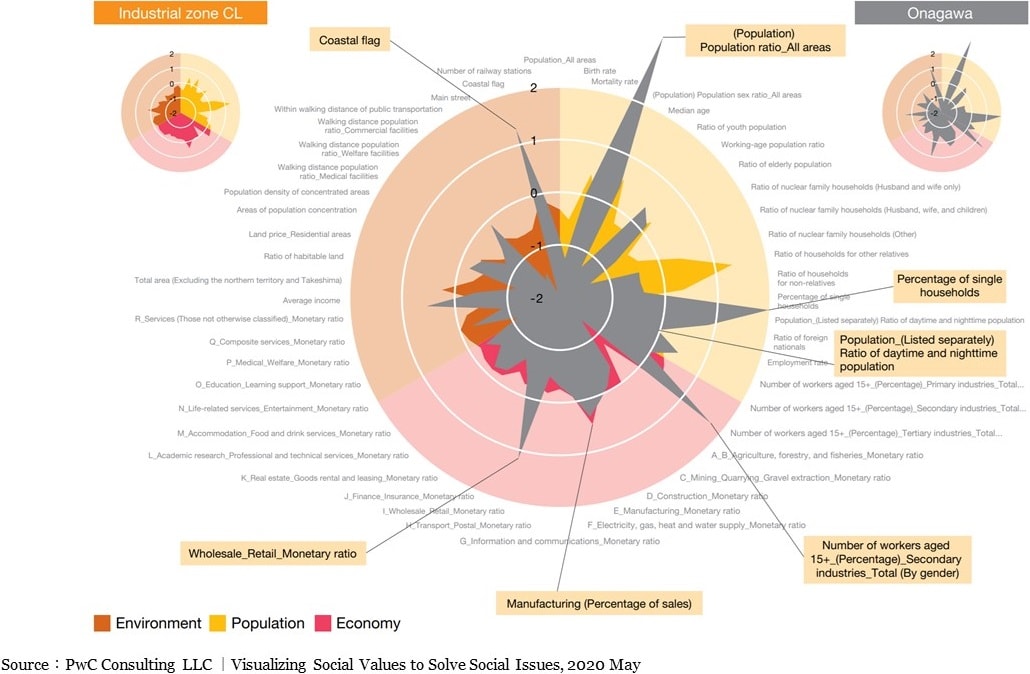Visualizing the mechanism of Onagawa’s recovery
In solving social problems, the SII takes an approach with a focus on visualizing the social and environmental changes (i.e., social impact) created by the activities and investments to amplify the positive social impact. Based on the basic policy and other specifics on community development set forth by Onagawa, we first defined the scope of the impact assessment as (1) population growth, (2) strengthening of disaster-resistance, and (3) stability of municipal finance, and set two impact goals, which are “increasing social population change per habitable area” and “improving financial indicators.” As part of the brainstorming to identify the important factors for achieving the goals, we held on-site interviews and conducted a clustering analysis of about 1,724 local governments, identifying ones with social structures similar to Onagawa based on statistics and comparing them. Moreover, to retrace how the social impact in Onagawa had taken shape so far, we used a logic model presenting causal relationships between the town’s resources (people, goods, and money) and environmental capital and the social impact (change) created. As a result, we identified the fact that the town had a solid foundation for discussing overall optimizationand made investment to solve the current and future problemswas Onagawa’s social performance drivers (factors behind success).
Suda
I was also surprised at how attentively everyone at PwC Consulting listened to what I had to say. Above all, they continued to come back on a regular basis, and each time, they analyzed things like our recovery efforts and new community development from an outside perspective and put them into words. That was much appreciated.
After the earthquake, Onagawa used a lot of national funds for community development. We knew we couldn’t and didn’t want to use that money in a way that would bring embarrassment. Always keeping that in mind, we worked on community development in such a way as to ensure that the people in Japan would later be satisfied with how Onagawa used the funds to recover.
At the time, we didn’t have a clear picture of what the right answer would be like. We had also been acting instinctively, so we were often unable to provide a good explanation of what we had done or what was the driving force behind the success. PwC Consulting’s report brought quite a bit of clarity in that regard.
Miyagi
First, we focused on visualizing the challenges faced by Onagawa following the earthquake, various actions that the town had taken in response, and the resulting social impact. By doing so, we hoped to develop a mechanism for managing the social impact, in which we could, for example, pursue another goal by changing a certain indicator. This would help institutions to make investment decisions and create a positive flow of money. We also believe that involving many different people will make it possible to expand the social impact.

















